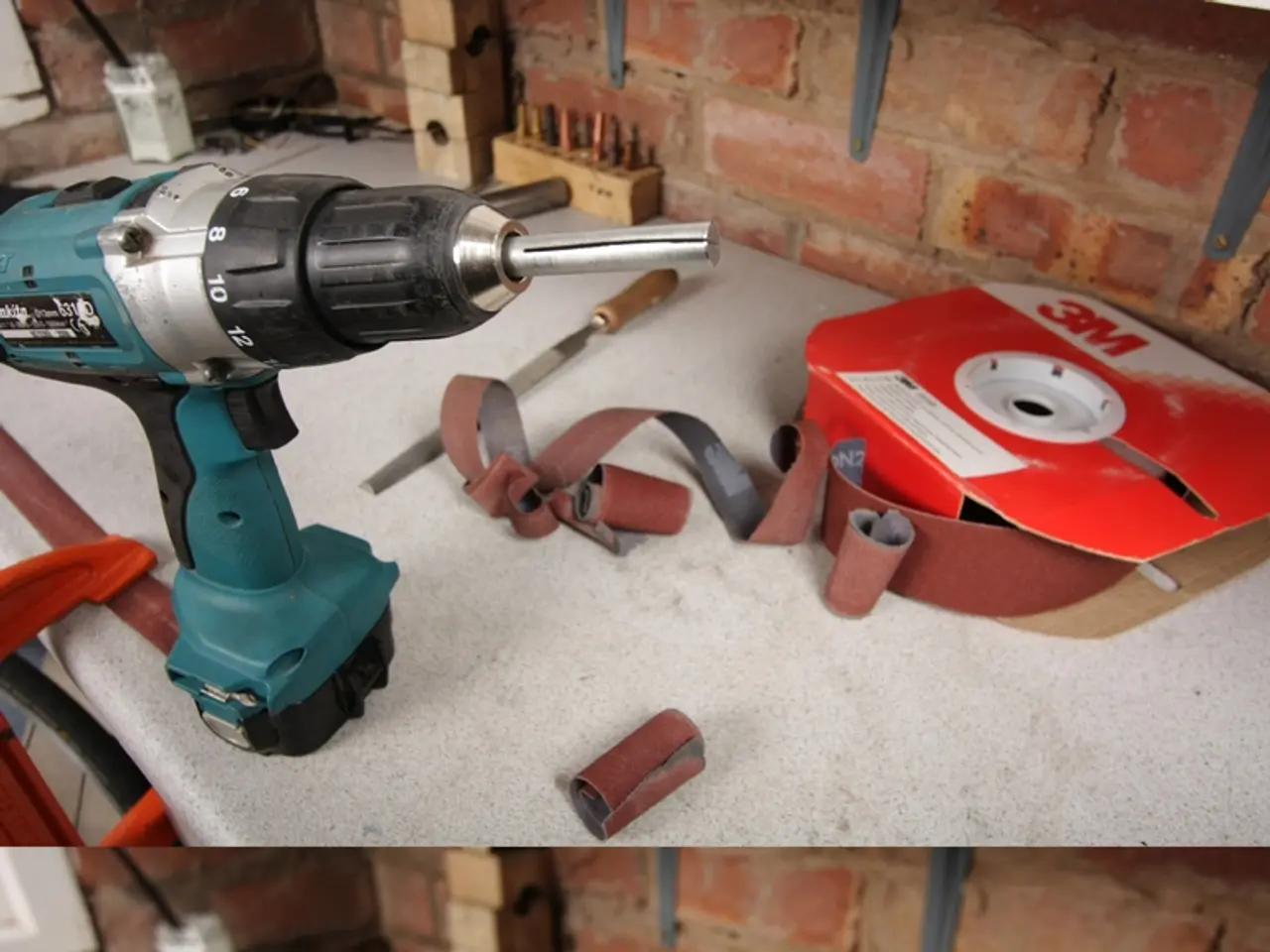Drilling through plasterboard strategically to minimize cracking and damage, ensuring neatly made holes
When it comes to drilling into plasterboard, taking the right precautions is essential to ensure a safe and successful outcome. Here's a step-by-step guide to help you navigate the process.
First and foremost, it's crucial to identify any hidden hazards behind the plasterboard before you start drilling. The most important step in this process is to use a stud, pipe, and wire detector (also known as stud finders or wall scanners). These tools can quickly and accurately locate electrical cables, plumbing pipes, and wooden studs behind the plasterboard, helping you avoid damaging them or creating safety risks when drilling.
In addition to electronic detectors, there are other precautions and techniques you can employ:
- Visual Inspection for Clues: Look for any signs of water damage such as bubbling paint, stains, warping, or mold growth, which could indicate hidden moisture or mold behind the wall.
- Using Masking Tape at the Drill Point: Placing a strip of masking tape over the drilling area helps prevent cracking and keeps plasterboard intact when drilling.
For older homes (especially pre-1985 constructions), be aware of possible asbestos presence in plaster walls or drywall. Asbestos is a hazardous material that requires professional inspection for safe management.
If you suspect mold, professional inspection involving targeted lighting, tape sampling, or air quality tests can be used to detect hidden growth behind plasterboard.
When it comes to selecting the right tools for the job, a versatile cordless combi drill is recommended for drilling into plasterboard. A 13-piece kit of general-purpose metal drill bits is suitable for this task, but masonry drill bits should be avoided. Stepped drill bits can help create a neat entry and exit hole in plasterboard.
When it comes to fixings, traditional Rawl plugs are not suitable for use in plasterboard, as they do not provide a secure grip and can become loose over time. Instead, specially designed plasterboard wall plugs should be used. Toggle bolts, with their winged design, are a popular choice due to their ability to hold up to 20-30kg. More specialized fixings like the Bullfix TV Mounting Kit from B&Q can hold up to 116kg.
Finally, remember to drill slowly and apply minimal pressure to avoid cracks in the plasterboard. Drilling into plasterboard is safe, but it's essential to follow these guidelines to ensure a successful and safe project.
In summary, the best and safest approach to identify hidden hazards behind plasterboard walls before drilling is to use electronic detectors designed to find studs, electrical wiring, and pipes, combined with a careful visual assessment of the wall surface for signs of damage or hazards. For potential asbestos or mold risks, involving professionals is recommended to avoid health hazards and structural damage.
References:
- Asbestos in the Home
- How to Drill into Plasterboard Safely
- Mold Inspection and Testing
- Wall Scanner Buying Guide
- Utilizing a stud finder or wall scanner, designed to locate studs, electrical wiring, and pipes, is vital when planning to drill into plasterboard for safety reasons.
- To avoid damaging hidden plumbing pipes or electrical cables during a drilling project, inspect the wall surface for any signs of water damage or bubbling paint before starting.
- In older homes built before 1985, be cautious as asbestos may be present in plaster walls or drywall, requiring professional inspection for safe handling.
- A versatile cordless combi drill, along with a 13-piece kit of general-purpose metal drill bits and stepped drill bits, are suitable tools for drilling into plasterboard.
- Traditional Rawl plugs should not be used for fixings in plasterboard as they do not provide a secure grip; instead, specialized plasterboard wall plugs like toggle bolts should be used.
- When following a drilling project in home-and-garden settings, remember to drill slowly and apply minimal pressure, ensuring a successful and safe outcome that aligns with your lifestyle and budget.




